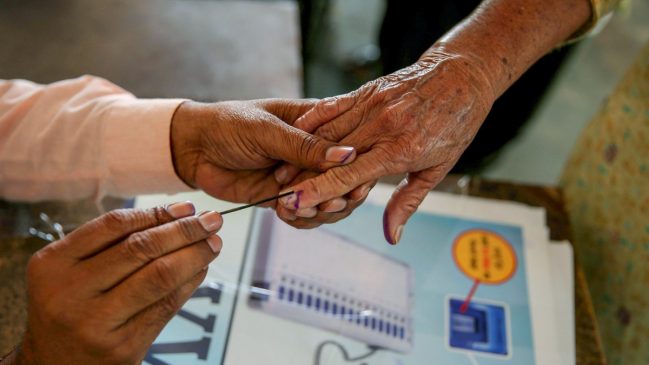EC released disaggregated voter turnout data, which showed that 84% of parliamentary constituencies saw declines of varying magnitude in turnout figures.
Eleven days after the end of the first phase of the general elections, and four days since the second phase, the Election Commission of India (ECI) on Tuesday officially released disaggregated voter turnout data which showed that 84% of parliamentary constituencies saw declines of varying magnitude in turnout figures.
Phase 1 saw a voter turnout of 66.14% while the voter turnout was 66.71% in Phase 2, according to the ECI data released on Tuesday. HT had reported the phase-wise voter turnout figures on Monday.
In 2019, the corresponding figures for the seats in these respective phases were 69.4% and 69.6%.
The poll body specified on Tuesday that the final turnout will only be available after postal ballots are added to the total vote count.
The numbers mean that of the 166.3 million people who were eligible to vote in Phase 1 across 102 constituencies, about 110 million people voted, while of the 158.8 million people who were eligible to vote across 88 constituencies in Phase 2, about 106 million people voted.
Read More: RBI Tells Banks To Stop Charging Extra Interest On Loans As Probe Shows Unfair Practices
The data showed that of the 176 seats for which a turnout comparison is possible with the 2019 Lok Sabha elections (the rest have undergone delimitation), varying degrees of decline was noted in 148.
A comparison is not possible for 12 constituencies (10 in Assam and two in Jammu and Kashmir) as their boundaries were redrawn after the 2019 Lok Sabha elections. A comparison of Outer Manipur PC is not possible because it went to polls partially in both phases.
In terms of states and Union territories, of the 19 states and UTs that voted in the first phase where a comparison with 2019 is possible, 16 saw a decline, while turnout fell in eight of the 11 provinces in the second phase.
To be sure, a small decrease in turnout can possibly be compensated when postal ballots are counted, which is already factored in the 2019 turnout data but not in the 2024 numbers.
Read More: Heatwave updates: ‘Orange alert’ in Kerala; maximum temp crosses 47°C in West Bengal’s Kalaikunda
However, of the 148 constituencies where Tuesday’s figures lagged those in 2019, 124 registered a decline of more than two percentage points.
Of these 124 seats, 57 registered a turnout decline of more than five percentage points and seven of more than 10 percentage points.
The seven seats with the biggest decline in turnout are: Nagaland (25.2 percentage points decline compared to 2019); Sidhi in Madhya Pradesh (13 percentage points); Mathura in Uttar Pradesh (11.6 percentage points); Khajuraho in Madhya Pradesh (11.31 percentage points), Rewa in Madhya Pradesh (10.9 percentage points); Pathanamthitta in Kerala (10.9 percentage points); and Shahdhol in Madhya Pradesh (10.1 percentage points), according to data analysed by HT.
“PC [parliamentary constituency] and AC [assembly constituency] wise data is also updated regularly on the voter turnout app as updated in IT system by Returning Officers through Form 17C. Copy of Form 17C are also provided for every Polling Station in a Constituency to all candidates though their polling agents. Actual data of Form 17 C shall prevail which is already shared with candidates. Final turnout will only be available post-counting with counting of postal ballots and its addition to total vote count,” the poll body said in its press release.
In the first round of voting, 66.22% of male voters exercised their right to vote, while 66.07% of female voters cast their ballot. 31.32% of eligible voters from the third gender voted, the data showed.
In the second phase, 66.99% eligible male voters cast their ballots, while this figure was 66.42% for female voters. Around 24% of third gender voters showed up to vote.
ECI, however, did not release data about people above the age of 85 or those with disabilities – the two categories eligible for home voting.





































